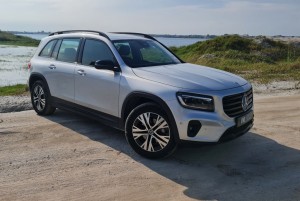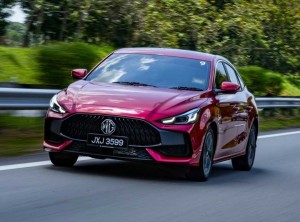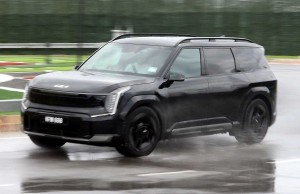DETROIT: General Motors Co. was so proud of its electric-vehicle battery when it showed it off four years ago, it gave it a name: Ultium. Now the name - and if all goes well, the associated baggage - is disappearing amid a broad strategic shift led by a new battery boss, former Tesla Inc. executive Kurt Kelty.
Kelty plans to lay out GM’s new approach to batteries at its investor day presentation today, including a plan to use different types of chemistry, a variety of shapes of cells and different ways to package them for its EVs.
He also will explain how he’ll cut EV costs, Kelty said in an interview.
The strategic rethink, which Kelty described not as a revolution but a "significant” change, follows battery production problems that have constrained sales and a lack of name recognition with consumers for the Ultium brand.
Going forward, GM’s pack - which currently forms the basis for a dozen EVs ranging from the small Chevrolet Equinox to the 4,000-kg electric Hummer - will no longer be one-type-fits-all, according to Kelty.

Kelty.
They’ll try to persuade investors that GM is in a different place than other auto companies. The core business is healthier and its future technology bets, such as EVs, self-driving cars and software-related services, are starting to gain traction.
"The market wants to hear that the EV strategy will be profitable immediately and what they will do about their problems in China,” David Whiston, a Morningstar Inc. analyst, said.
"They may talk about EV profits and sales and what it can do in 2025. Whether it moves the needle, I don’t know.”
Ultium push
If GM never really pushed the Ultium name to consumers, the company certainly tried hard to push it with investors.
Barra made the Ultium strategy a focal point in her 2021 investor day presentation.
At the time, she said the company could double revenue to US$280 billion by 2030, partly because the battery pack could give rise to a wide variety of EVs quickly.
Barra figured GM could expand its lineup faster than even market leader Tesla, which it recently has done, and gain a bigger slice in a fast-growing sector of the auto business.
The company’s stock jumped very little that day but by the end of the year was trading near US$60 a share, the highest in at least a decade. At one point, a Morgan Stanley auto analyst, Adam Jonas, even suggested Barra ditch GM’s 100-year-old name and call the entire company Ultium to show its new direction and call out the automaker’s battery chops.
However, GM’s battery assembly plants have had persistent problems with the automation that stuffs 24 cells into the modules.
That delayed the launch of the Hummer EV and kept other vehicles from getting into mass production. Its assembly lines have only recently started moving at scale.
The battery’s brand name Ultium, initially set up to be the auto industry’s version of "Intel Inside,” never became a selling point for consumers, either, people familiar with the matter said.
That could be due to the fact that building Ultium batteries has been so problematic, constraining the automaker to selling just a little more than 70,000 of them so far this year with sales only recently starting to rise.
GM had hoped to be able to build 400,000 EVs by the middle of 2024 and have production in place to produce 1 million of them by the end of 2025.
The Ultium strategy also resulted in heavy and expensive vehicles that have long range, but aren’t individually optimised.
Hyundai Motor Co. and Volkswagen AG have a strategy similar to GM’s, but Tesla and China’s BYD tailor battery packs to each model.
Kelty has been working on a future plan that applies a more customised approach to each vehicle, while reducing costs and weight.
"We’ve got so many different products in different areas, that we need to find an optimal solution for each one,” he said. "It’s not necessarily the same form factor or same chemistry.”
Some of the details of GM’s new battery strategy were reported earlier by The Information.
New partnerships
Going forward, Kelty said, some future vehicles will still have pouch cells and modular construction similar to Ultium, while others may get their own bespoke, dedicated battery pack like Tesla uses.
GM may stick with the floppy pouch cells that its EVs use now. Others may go to hard, steel-cased prismatic cells that Kelty said can be easier to package.
The company has been in discussions with Japan’s TDK Corp. to make batteries in a US plant that use lithium iron phosphate technology licensed from Contemporary Amperex Technology Co. of China.
Lithium iron phosphate, or LFP batteries, are cheaper but hold less energy than nickel-rich lithium ion batteries.
When the Chevy Bolt EV goes into production next year, it will use lithium iron phosphate batteries, but they will not come from a US-based venture with TDK yet.
GM is able to develop more batteries because of two new centres the company is incorporating into its EV development.
The Wallace battery lab, where it experiments with different kinds of batteries, and the Battery Cell Development Centre, a new facility which Kelty plans to also announce tomorrow that will start working with cells in 2027.
With those running, GM can develop new batteries and get them ready for production in about 18 months, saving a year of development time.
In August, GM announced its third EV battery plant in the US set to open in 2027, a more than US$3 billion investment this time going with Korea’s Samsung SDI instead of longtime partner LG.
The investments underscore that, despite a slowdown in EV sales growth, GM is pushing ahead while other automakers are reining in EV development.
Ford Motor Co. has pulled back plans for its next EV and is focusing on more efficient plug-in hybrids.
If GM can deliver, which has been a struggle for the automaker when it comes to electric vehicles, Kelty will have a story that EV-wary investors want to hear.
"Our next-gen battery packs will have significantly less other parts, significantly less weight, significantly less cost,” he said.
"All that is for our next generation that is being developed right now. We’re moving fast.”












